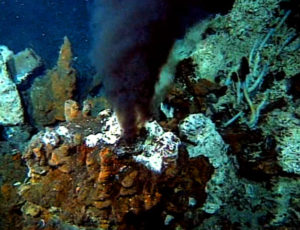Guest Blog by Bob Bruner
Bob Bruner has attended and presented at the scientific conferences described below since 2015. His contribution is entitled “Special Exhibit on Meteorites and Minerals associated with the Origin of Life on Earth or Mars” and can be found on the web. He is a long-time member of the Mars Society and is a volunteer at the Denver Museum of Nature and Science.
I would like to offer a special THANK YOU to Mr. Bruner for traveling the world to bring us this first hand report and his tireless passion in the pursuit of scientific knowledge.
Four popular origin of life theories that have influenced the hunt for life on Mars. The first are the clay theories which probably started in the late 1950’s with Dr. Bernal of the UK. They were further developed in the 1970’s and 1980’s by Dr. Cairns-Smith of the UK, then in the 1990’s by Dr. Ferris of the USA. They were added to in the 2000’s by Dr. Hashizume of Japan and Dr. Hansma of the USA. The theories claim that the structure of clay can provide compartments for proto life to begin, with large molecules like RNA developing later.
 The second are the Black Smoker-type hydrothermal vents at the bottom of the ocean theories primarily developed by Dr. Wachtershauser of Germany with an emphasis on iron-sulfur and Dr. Mulkidjanian of Germany with an additional emphasis on zinc. These theories claim that the minerals have the ability of powering the chemical reactions that allow small organic molecules to get larger and larger, ultimately becoming proto life. They were popular in the 1980’s and 1990’s.
The second are the Black Smoker-type hydrothermal vents at the bottom of the ocean theories primarily developed by Dr. Wachtershauser of Germany with an emphasis on iron-sulfur and Dr. Mulkidjanian of Germany with an additional emphasis on zinc. These theories claim that the minerals have the ability of powering the chemical reactions that allow small organic molecules to get larger and larger, ultimately becoming proto life. They were popular in the 1980’s and 1990’s.
The third are the warm hydrothermal vents at the bottom of the ocean theories primarily developed by Dr. Russell of the USA, Dr. Sleep of the USA, Dr. Schulte of the USA, and Dr. Holm of Sweden. These theories took off when the Lost City hydrothermal field was discovered by Dr. Kelley of the USA in the 2000’s. The process of serpentinization, where olivine/pyroxene interacts with CO2 and sea water to produce serpentine, magnetite, brucite, CH4 and H2, gives new proto life energy and food.
 The fourth are the surface hydrothermal pool theories which probably started with Darwin in 1859, but gradually fell out of favor until revived by Dr. Deamer and Dr. Damer of the USA in 2016. They envision small areas of land above a mostly-ocean Earth which contain warm pools interacting with the surrounding environment creating wet-dry cycles which create ever larger organic molecules, ultimately becoming proto life. Opaline silica and geyserite and sinter line hydrothermal pools.
The fourth are the surface hydrothermal pool theories which probably started with Darwin in 1859, but gradually fell out of favor until revived by Dr. Deamer and Dr. Damer of the USA in 2016. They envision small areas of land above a mostly-ocean Earth which contain warm pools interacting with the surrounding environment creating wet-dry cycles which create ever larger organic molecules, ultimately becoming proto life. Opaline silica and geyserite and sinter line hydrothermal pools.
For many years the clay theories dominated the hunt for life on Mars, not only as proof of water (the existence of clay proves past water) but lately in the case of montmorillonite as a source of food for microbes according to Dr. Craig of the USA. The next hot theory was black smoker-type hydrothermal vents where abundant life forms were spotted by expeditions to the bottom of the sea. But some scientists said the hot water would not allow large molecules like RNA to develop. Then came the warm hydrothermal vents where the water was not too hot for large organic molecules to develop. This theory became the most popular theory because life would be protected from bad things happening on the surface such as bombardment by asteroids and comets. In fact it was adopted by the Europeans in their roadmap ASTROMAP published in 2015. But in 2016, the idea that surface hydrothermal pools provide required wet-dry cycles started to dominate. At the NASA Biosignature Conference in 2016 this idea dominated the conference report so much so that the warm hydrothermal vent people asked for a pre-meeting to produce their own report about rock-

water interaction before the 3rd Landing Site Meeting for the Mars2020 rover in 2017. Even so, the landing site Columbia Hills was still promoted to third place over other sites which had more votes because of the work done by Dr. Van Kranendonk and Dr. Walter of Australia and Dr. Farmer and Dr. Ruff of the USA. At the 4th Landing Site Meeting for the Exomars 2020 Rover in 2017, the only theory NOT promoted was the Black Smoker-type hydrothermal vent theory.
As one can see, politics among scientists have influenced landing site decisions and have no place if good science is to emerge. If a voting system was agreed to ahead of the conference, it should be followed. It was followed at the 4th Landing Site Meeting for Exomars 2020, but it was not followed at the 3rd Landing Site Meeting for Mars2020.
[Image Credit: PBS.org, Exploring Earth, NASA]
Note and Reference: The key minerals for obiters and rovers on Mars are clays (montmorillonite), serpentine, and opaline silica. See my abstract at astrobiology.gr scroll down to EANA 2016 abstracts on page B8.